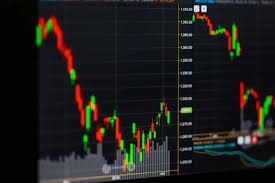- Your cart is empty
- Continue shopping

Welcome to the fascinating world of Forex exchange trading, where the currency market operates 24 hours a day. As one of the most dynamic trading arenas available, Forex gives traders the opportunity to engage in global markets and make profits by buying and selling currencies. If you’re keen on understanding how to navigate this complex field effectively, forex exchange trading trading-terminal.com is a resource that can help.
Understanding Forex Exchange Trading
Forex, or foreign exchange, is the market where currencies are traded. It is the largest and most liquid financial market in the world, with a daily trading volume exceeding $6 trillion. Unlike stock markets, Forex operates continuously due to the international nature of currencies, with trading occurring across major financial centers in different time zones.
How Forex Trading Works
In Forex trading, currencies are traded in pairs, such as EUR/USD (Euro/US Dollar), GBP/JPY (British Pound/Japanese Yen), and USD/CHF (US Dollar/Swiss Franc). The first currency in the pair is known as the base currency, and the second is the quote currency. The exchange rate indicates how much of the quote currency is required to purchase one unit of the base currency.
Traders can engage in two basic types of transactions: buying and selling. When you buy (go long), you anticipate that the base currency will appreciate in value against the quote currency. Conversely, when you sell (go short), you believe the base currency will depreciate. Successful Forex trading requires understanding market movements, economic indicators, and geopolitical events that can affect currency values.
Key Concepts in Forex Trading
1. Pips and lots
In Forex trading, price movements are measured in pips (percentage in points). A pip is the smallest price move that a given exchange rate can make based on market convention. With most currency pairs, a pip is the fourth decimal place (0.0001), while for JPY pairs, it is the second decimal place (0.01).

Trading is typically done in lots, which represent the size of a trade. The standard lot is 100,000 units of the base currency, but there are also mini lots (10,000 units) and micro lots (1,000 units) available, which provide traders with flexibility in managing their positions without excessive risk.
2. Leverage
Leverage is a significant aspect of Forex trading that allows traders to control large positions with a relatively small amount of capital. For example, with a leverage ratio of 100:1, a trader can control a $100,000 position with just $1,000 of their own money. While leverage can amplify profits, it also increases potential losses, making risk management essential.
3. Margin
Margin is the amount of capital required in your trading account to open a leveraged position. The margin requirement varies by broker and can depend on the currency pair as well. Traders need to maintain a minimum margin level to keep their positions open; if equity falls below this level, a margin call occurs, forcing the trader to either deposit more funds or close positions.
Developing a Forex Trading Strategy
A well-defined trading strategy significantly enhances your chances of success in Forex. Here are some key elements to consider when developing your strategy:
1. Define Your Trading Style
Traders can choose from various trading styles, including day trading, swing trading, scalping, and position trading. Your choice should align with your personality, risk tolerance, and the amount of time you can dedicate to the market. For instance, day traders open and close positions within a single trading day, while swing traders hold positions for several days or weeks.
2. Analyze the Market
There are two primary methods of market analysis in Forex: fundamental analysis and technical analysis. Fundamental analysis involves evaluating economic indicators, interest rates, and political events to forecast currency movements. Technical analysis focuses on studying price charts and using various indicators and patterns to predict future price movements. Most successful traders utilize a combination of both methods.
3. Implement Risk Management Strategies
Risk management is crucial in Forex trading. Traders should determine their risk tolerance and implement measures such as setting stop-loss orders to limit potential losses on each trade. A common recommendation is to risk only a small percentage of your trading capital on any single trade, often between 1-3%.
The Importance of Discipline and Psychology in Forex Trading
Beyond strategy and analysis, a trader’s mindset plays a pivotal role in trading success. Emotional control, discipline, and patience are essential attributes for a Forex trader. The volatility of the Forex market can lead to impulsive decisions, which often result in losses. Establishing a trading routine, adhering to your strategy, and maintaining a journal of trades can help reinforce discipline and improve trading performance.
Conclusion
Forex exchange trading offers unparalleled opportunities for profit, but it also comes with significant risk. By equipping yourself with knowledge, developing a robust trading strategy, and practicing effective risk management, you can enhance your trading experience. Whether you are a beginner or an experienced trader, continuously educating yourself and adapting to changing market conditions will be key to achieving long-term success in Forex trading.
For traders interested in gaining insights and tools to improve their trading skills, platforms like trading-terminal.com provide valuable resources that can help you navigate the Forex landscape more effectively.
